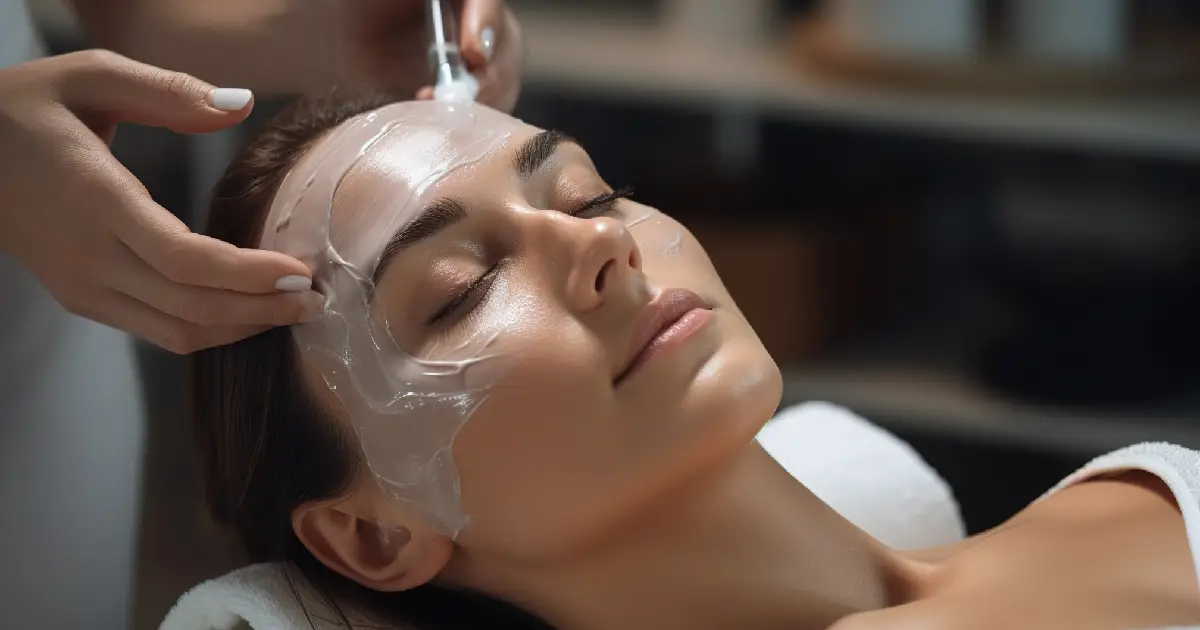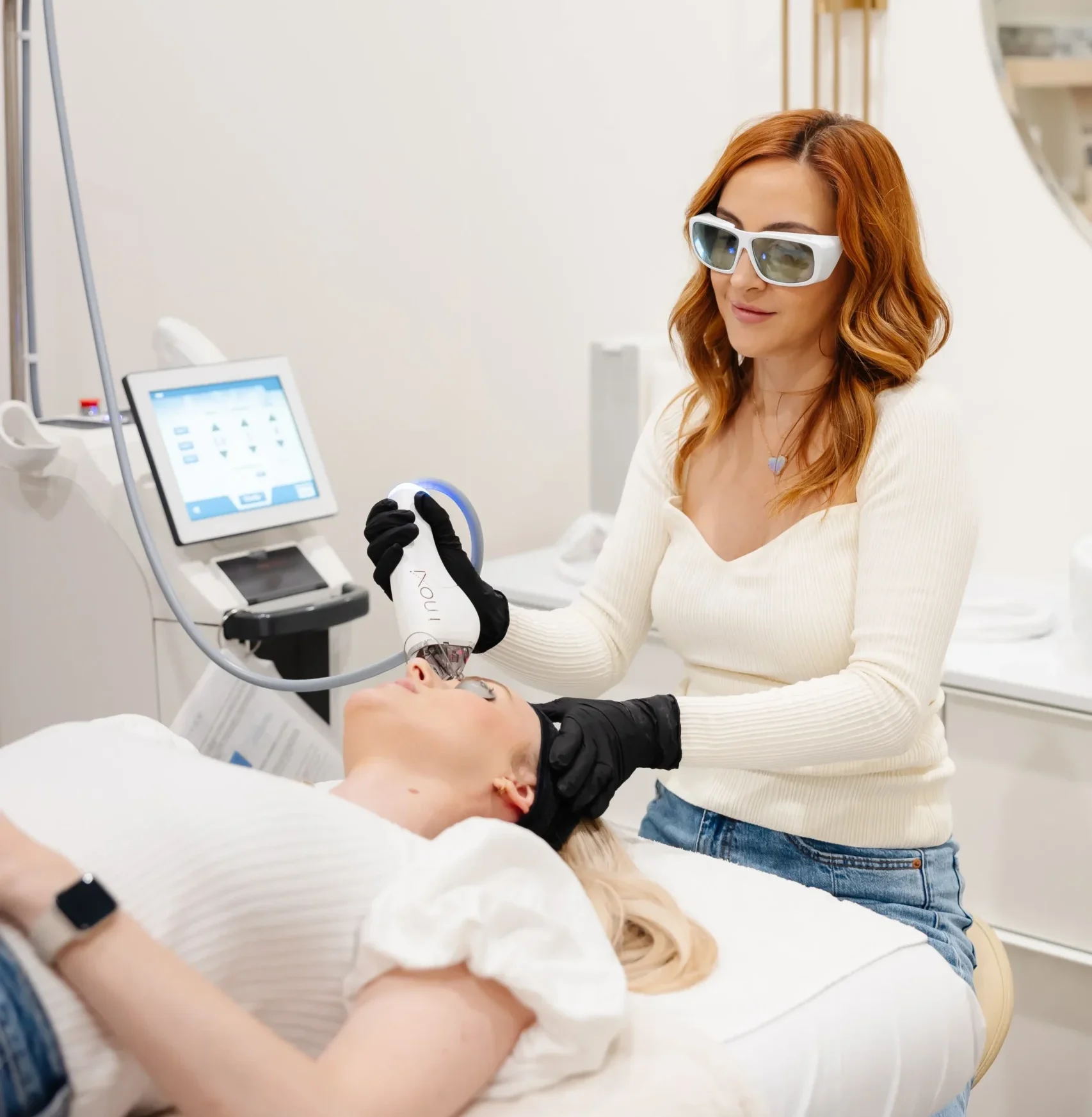The beauty industry has introduced advanced treatments to achieve youthful, radiant, and beautiful skin using advanced technologies and scientific innovations. Among these treatments, the chemical peel has consistently stood the test of time, maintaining its status as a reliable and effective solution for a variety of skin concerns due to its proven results and versatility. Let’s look into the truth about chemical peels, dispelling myths and uncovering their natural benefits.
Understanding the Basics of a Chemical Peel
Applying a chemical solution to the skin is the process of resurfacing it through a chemical peel. By scrubbing away the outer layers, this solution encourages the development of new, smoother skin.
The depth and severity of chemical peels vary, which affects how they affect the skin. They fall into three general categories:
- Superficial Peels: Also known as lunchtime peels, these are mild and use alpha-hydroxy acids (AHAs) like glycolic acid. They are perfect for treating mild discoloration and rough skin because they barely penetrate the skin’s outermost layer.
- Medium Peels: Medium peels use trichloroacetic acid (TCA) or glycolic acid to reach the middle layers of the skin. They can effectively address age spots, fine lines, and moderate skin discoloration.
- Deep Peels: Deep peels typically involve phenol, penetrating several layers of skin. They are more intense and are used for significant skin concerns like deep wrinkles, scars, and precancerous growths.
How Does a Chemical Peel Work?
The process of a chemical peel involves exfoliating the skin’s outer layers with a chemical solution. Underneath this process lies healthier, younger skin. This is a detailed description of how a chemical peel operates:
Preparation and Cleansing
Before applying the chemical solution, the skin is thoroughly cleansed to remove oils and impurities. In some cases, a pre-peel prep solution like alcohol or acetone is used to ensure the peel penetrates uniformly.
Application of the Chemical Solution
A chemical solution, carefully chosen based on the patient’s skin type and concerns, is applied to the skin. This solution can include one or more of the following acids:
- Alpha Hydroxy Acids (AHAs): Glycolic acid, lactic acid
- Beta Hydroxy Acid (BHA): Salicylic acid
- Trichloroacetic Acid (TCA): Used in medium-depth peels
- Phenol: Used in deep peels
Exfoliation Process
The acid solution breaks down the connections that hold dead skin cells together in the epidermis—the outermost layer of skin. Depending on the peel depth, the acid may penetrate deeper into the dermis. As the chemical solution penetrates the skin, it induces a controlled injury, prompting the skin to exfoliate and peel over the next few days.
Neutralization
For some chemical peels, especially deeper ones, the solution may need to be neutralized with a particular agent. For others, such as glycolic acid peels, the solution is self-neutralizing over time. Cooling fans, ice packs, or topical anesthetics may be used to minimize discomfort.
Peeling and Regeneration
After the peel, the exfoliated layers gradually slough off, revealing new skin underneath. Smoother, brighter, and more evenly toned skin is the result of the body’s natural healing process, which also stimulates the regeneration of new skin cells. For medium and deep peels, collagen production is also stimulated, leading to improved skin elasticity and firmness.
Post-Peel Care and Recovery
The depth of the peel affects the recovery time:
- Superficial Peels: Minimal downtime, slight redness, and peeling for 1-3 days.
- Medium Peels: Redness, swelling, and peeling for up to a week.
- Deep Peels: Redness, swelling, and peeling for 2-3 weeks, followed by long-term redness lasting up to three months.
Post-peel care involves diligent sun protection, gentle cleansing, and using hydrating moisturizers to aid in healing.
Mechanism of Action of Common Chemical Peels
- Alpha Hydroxy Acids (AHAs): Exfoliate the stratum corneum (outer layer) by breaking down the desmosomes (cell junctions) between dead skin cells. Ideal for brightening skin and improving texture.
- Beta Hydroxy Acid (BHA, Salicylic Acid): Oil-soluble, penetrating deeply into pores to exfoliate and reduce acne.
- Trichloroacetic Acid (TCA): Penetrates deeper layers, causing the skin to blister and peel. Effective for treating fine lines, pigmentation, and sun damage.
- Phenol: The most vital peeling agent, penetrating deep into the dermis. It results in significant skin rejuvenation but requires the longest recovery time.
Common Myths and Misconceptions About Chemical Peels
Chemical peels have been a popular cosmetic treatment for decades, but misconceptions persist. Let’s dispel some common myths:
Myth 1: Chemical Peels Are Painful
- Fact: The sensation during a chemical peel depends on the depth and type of peel. Superficial peels generally cause only a mild tingling or stinging sensation. Medium and deep peels can lead to moderate discomfort, but this is often managed with topical anesthetics, cooling agents, or oral pain relief.
Myth 2: Chemical Peels Are Dangerous
- Fact: When performed by a qualified dermatologist or licensed skincare professional, chemical peels are safe. The key is proper assessment of the patient’s skin type and carefully following post-peel care instructions. Deep peels carry more risks but are still secure in the hands of a skilled professional.
Myth 3: Chemical Peels Will Leave the Skin Red and Flaky for Weeks
- Fact: Recovery time varies depending on the peel depth:
- Superficial Peels: Minimal redness and flaking for 1-3 days.
- Medium Peels: Moderate redness and peeling for 5-7 days.
- Deep Peels: Significant redness and swelling, with peeling for up to 2-3 weeks.
Myth 4: Chemical Peels Only Work for Severe Skin Issues
- Fact: Chemical peels can be tailored to address a variety of skin concerns. Superficial peels are effective for regular skin maintenance, while medium and deep peels can treat specific issues like wrinkles, pigmentation, and scars.
Myth 5: Peels Thin the Skin Over Time
- Chemical peels stimulate collagen production and cellular turnover, which can improve skin thickness and elasticity over time. However, it’s essential not to overdo it—consult your dermatologist for the correct frequency based on your skin type.
Myth 6: All Chemical Peels Are the Same
- Fact: Chemical peels come in different types and concentrations, tailored to various skin concerns:
- Alpha Hydroxy Acid (AHA) Peels: Mild for fine lines, dullness, and uneven skin tone.
- Beta Hydroxy Acid (BHA) Peels: Ideal for oily and acne-prone skin.
- Trichloroacetic Acid (TCA) Peels: Moderate depth, effective for pigmentation and wrinkles.
- Phenol Peels: Deep, best for significant sun damage, deep wrinkles, and scars.
Myth 7: Chemical Peels Are Too Harsh for Sensitive Skin
- Fact: Individuals with sensitive skin can benefit from chemical peels if the right type and strength are chosen. Superficial peels using lactic acid or mandelic acid are often well-tolerated by sensitive skin types.
Myth 8: Chemical Peels Shouldn’t Be Done in the Summer
- Fact: While it’s true that UV exposure can affect healing, chemical peels can be performed safely in the summer with diligent sun protection. It’s important to avoid direct sunlight during peak hours and to use a high-SPF sunscreen.
Myth 9: Results Are Immediate
- Fact: Visible improvements often take time. Superficial peels show results in a few days, while deeper peels may require weeks or even months to see full benefits due to the longer healing process.
Myth 10: Peels Cause Permanent Scarring
- Fact: Scarring is rare if the peel is done correctly and post-care instructions are followed. Deep peels carry a higher risk, but most patients recover without permanent marks.
Who Should Consider a Chemical Peel?
A chemical peel can benefit those with various skin concerns. Here are some conditions that can be addressed:
- Acne and Acne Scars: AHAs and BHAs (beta-hydroxy acids) in peels can reduce acne breakouts and diminish the appearance of scars.
- Hyperpigmentation: Sunspots, melasma, and post-inflammatory hyperpigmentation can be significantly lightened with peels.
- Fine Lines and Wrinkles: By inducing collagen regeneration, peels can soften fine lines and wrinkles.
- Rough Skin Texture: Regular peels help in achieving a smoother skin texture.
- Enlarged Pores: Peels can reduce the appearance of enlarged pores by exfoliating intensely.
Are Chemical Peels Right for You?
Chemical peels offer a diverse and potent solution for tackling various skin issues. Nonetheless, these treatments may only be appropriate for some. Those experiencing active skin infections, women who are pregnant or nursing, and individuals with a propensity for developing keloids should seek guidance from a dermatologist prior to pursuing a chemical peel treatment.
Conclusion
Chemical peels offer an effective way to rejuvenate your skin, unveiling a brighter and more even complexion. Fine Line Aesthetics in Frisco TX proudly offers highly effective Chemical Peel treatments specifically designed to minimize and eliminate stubborn hyperpigmentation and melasma, particularly in cases where these skin concerns have proven resistant to traditional treatment methods. Reveal your most radiant skin with a transformative chemical peel designed to smooth imperfections and unveil a brighter, more youthful complexion. Contact us today to schedule your appointment!








